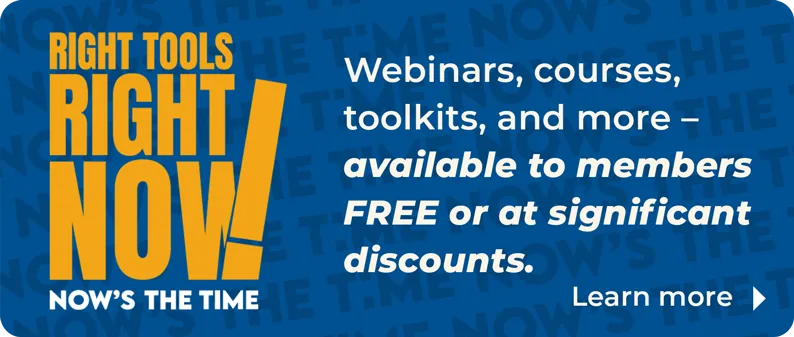
The National Flood Insurance Program, which helps property owners, renters and businesses recover from flood damage, is due to expire Dec. 20. For the 22,600 communities participating in the program, NFIP renewal is essential to prevent risks to homeowners.
During the NAR NXT conference in Boston in November, Mabél Guzmán, a broker at Coldwell Banker in Chicago and past chair of the National Association of REALTORS® Insurance Committee, sat down for an interview with Bill Leininger, broker-owner of Dean and Leininger Real Estate in Montana and 2024 chair of the NAR Insurance Committee, and Jeff Jackson, assistant administrator of the Federal Emergency Management Agency and senior executive of the NFIP. They discussed the implications of NFIP reauthorization and the need for reforms to the program, as well as the new NFIP Direct to Customer Quoting Tool now available at floodsmart.gov.
NAR—along with the property and casualty insurance industry, lending institutions and state and local officials—is encouraging Congress to extend NFIP’s authority to write insurance and prevent a disruptive lapse in coverage. With the program currently operating on its 31st short-term extension, the housing and insurance industries are seeking a longer-term authorization and reform measure to support homeowners nationwide.
In the video, Leininger identifies NAR members’ actions on Capitol Hill to encourage legislators to extend NFIP authorization and remove uncertainties for the industry.
NAR and FEMA, which recently renewed their partnership, are working to improve consumer education on flood risk and insurance issues. Together, they are promoting the value of the new NFIP rate quoting tool.
The more information that can be made available to consumers on a 24/7 basis, the better, Jackson says. “People like to do their online research even before they come to an agent … to understand the facts about a particular home purchase. People are coming in now more prepared than they ever have; they come in with a list of questions, and it’s all because of how much is available online.”
FEMA will regularly update the floodsmart.gov site with current data. “We hope to continue to work with NAR to create a feedback loop where we can understand what you’re hearing from your clients,” Jackson says about real estate professionals. “We can continue to put up content to address the questions and concerns that [clients] have.”
The new resource opens the door to better information-sharing on flood risks. “Less gatekeeping, more information. Let’s increase transparency,” Guzmán says.
Protecting Against Risks
When the NFIP lapsed for over a month in 2010, more than 40,000 home sales were impacted, according to NAR research. This lapse left 1,300 homeowners per day exposed to substantial uninsured flood losses, creating uncertainty and affecting the broader communities and taxpayers when areas flooded. The federal government had to step in to help, Guzmán says.
During an NFIP lapse, no new government-backed flood insurance policies may be issued. In this circumstance, federal lending regulators will suspend the mandatory insurance purchase requirement and enable real estate transactions to move forward without flood insurance. But that puts buyers in flood-prone areas at risk, says Austin Perez, NAR’s senior policy representative on insurance.
Since its inception in 1968, the NFIP has received more than 2.6 million claims, and it currently insures about 4.6 million properties nationwide. In 2023 alone, the NFIP received 21,000-plus claims totaling roughly $1 billion.
Flood Maps Don’t Tell the Whole Story
Flood maps are limited to the highest-risk areas along the coasts and major rivers and do not account for heavy rainfall, which is common inland. In fact, more than one-third of NFIP flood insurance claims come from outside high-risk flood areas, according to FEMA.
“These catastrophic flooding events are not going away. It’s just a matter of time when the next one lands,” Jackson says, adding that the real estate industry should emphasize to consumers the risk of flooding wherever it rains.
FEMA warns that for consumers, using flood maps alone as the basis of an insurance risk analysis can be very misleading or inaccurate, and that homeowners need to consult with an insurance agent or use the new direct-to-consumer tool for a valid rate quote.
“It's important to understand what the maps are and what they aren't,” Jackson says. “They are not the best proxy for [understanding] overall flood risk to a home.”
A standard homeowner’s insurance policy typically does not cover flooding, and FEMA aid is rarely enough to cover flood damages. An NFIP policy offers substantial protection.
For those who qualify, the average FEMA check is less than $5,000, which is not enough to replace appliances let alone rebuild a house, Leininger explains. An NFIP policy, on the other hand, offers a homeowner up to $250,000 of building replacement cost coverage and $100,000 for lost belongings.
“I often hear people say that flooding is just a coastal issue, but that’s not true,” Guzmán says. “Just look at the historic flooding in the mountains of North Carolina, where entire towns were washed away after [Hurricane] Helene dropped 20 inches of rain.”








